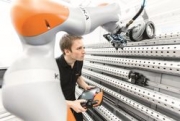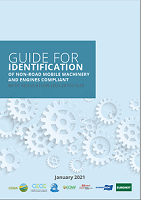Robotics News

September 2017
New study on the Impact of Industrial Robots on Workers in Germany
A new study has been published on the impact of rising robot exposure on employment in Germany. Special focus is set on the careers of individual manufacturing workers and the equilibrium impact across industries and local labor markets, not only on the net effect but also in the aggregate.
The study has been conducted as a collaboration between researchers at University of Würzburg, University of Mannheim, and Düsseldorf Institute for Competition Economics (DICE).
It thoroughly traces employment biographies and earnings using linked employer-employee data profiles of roughly 1 million workers with a varying degree of robot exposure over time.
The study finds no evidence so far that robots have been major job killers. However, robots do affect the composition of aggregate employment in Germany. It is estimated that every robot destroys roughly two manufacturing jobs. This implies a total loss of 275,000 manufacturing jobs in the period 1994-2014, which accounts for roughly 23% of the overall decline during those two decades. But this loss was fully offset (or even slightly overcompensated) by additional jobs in the service sector.
Most importantly, the study finds that robots have not raised the displacement risk for incumbent manufacturing workers. Quite in contrast, workers that are more exposed to robots are even more likely to remain employed in their original workplace, though not necessarily performing the same tasks as before the robot ascension. The aggregate decline in manufacturing employment is therefore not caused by destruction of existing jobs, but it is solely driven by fewer new manufacturing jobs for young labor market entrants.
In the aggregate it is found that robots raise labor productivity, but not wages. Most rents of this new technology, therefore, seem to be captured by profit claimants and factors other than labor. It is thus concluded that robots seem to have contributed to the declining labor income share, which has been noted in many countries and which is perhaps among the most important economic challenges for the future.
Germany was specifically chosen for this study for at least three reasons:
- Robots are much more prevalent in Germany than in the United States and elsewhere outside Asia.
- Germany is not only a heavy user but also an important engineer of industrial robots.
- The third reason to focus on Germany is a practical one. Detailed German labor market data are merged with the same data on industrial robots, that is also used by Acemogly and Restrepo (Robots and Jobs: Evidence from US Labor Markets, 2017) and in the pioneering study by Graetz and Michaels (Robots at Work, 2015) who exploit industry-level variation across countries. The data are from the International Federation of Robotics (IFR) and report the stock of industrial robots installed in different industries and countries over the period 1994-2014. Unlike for the US and some other countries, the data for Germany is available over the entire observation period, thus allowing for more accurate measurement of robot exposure.
Quicklinks
EUnited AISBL- European Engineering Industries Association,
Industrious Brussels EU District, Avenue des Arts 6-9, 1210 Brussels, Belgium, +32 490 57 57 65
Transparency Register number: 0289344948-82
Industrious Brussels EU District, Avenue des Arts 6-9, 1210 Brussels, Belgium, +32 490 57 57 65
Transparency Register number: 0289344948-82
© 2025 Eunited aisbl, Bruxelles














































































































